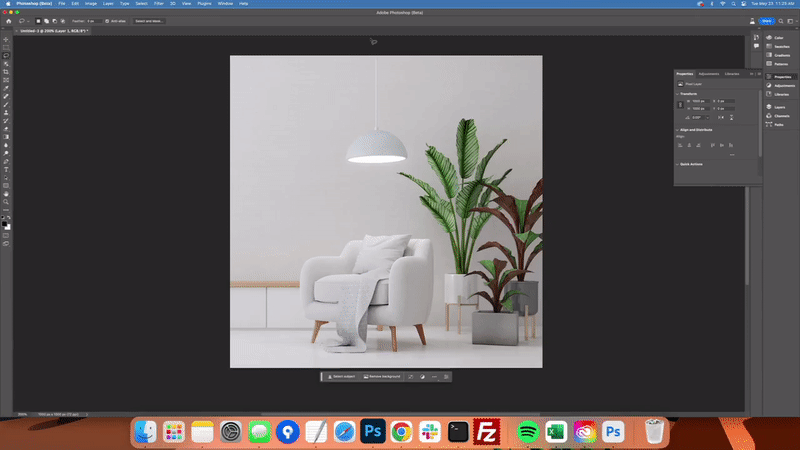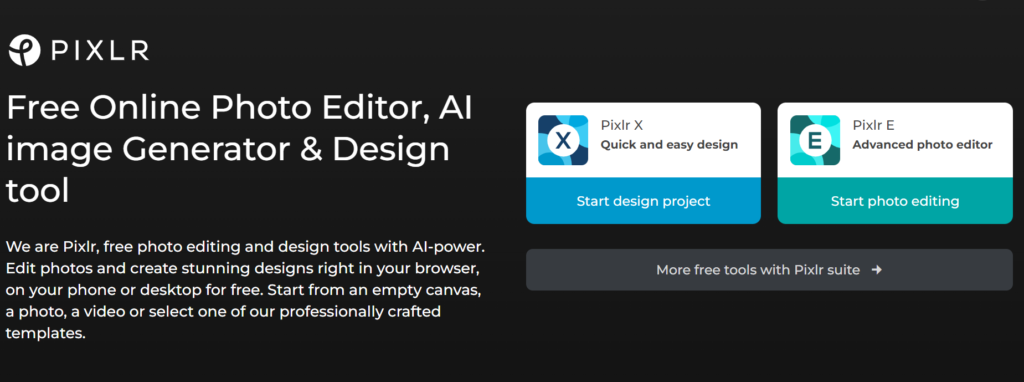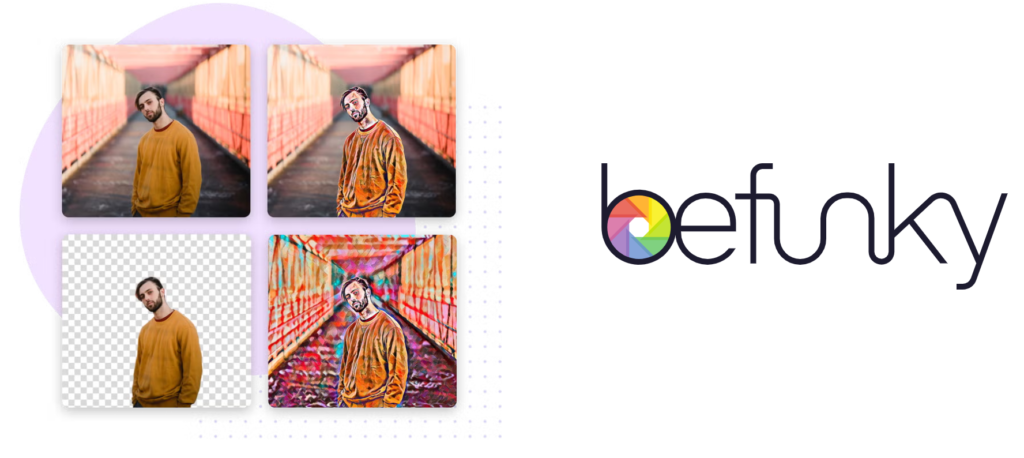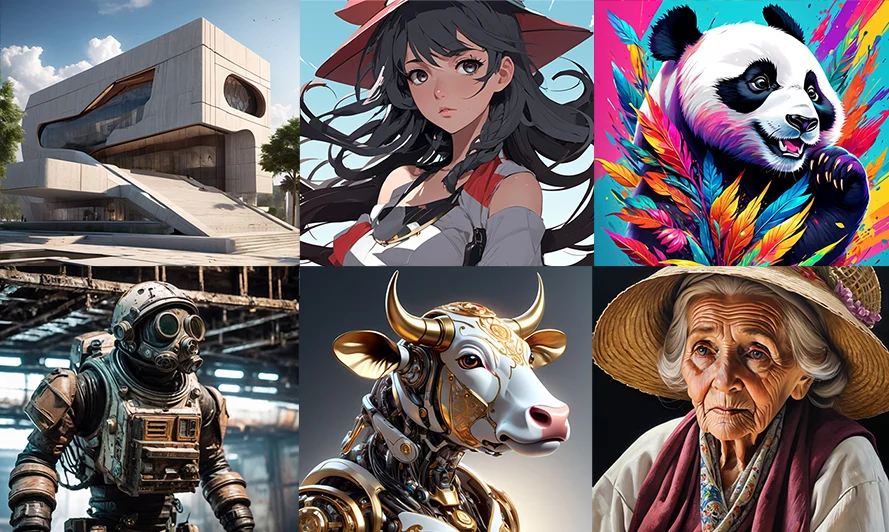Importance of AI Image Editors in the Digital Era
In the digital era, the significance of AI image editors cannot be overstated. These innovative tools have ushered in a new wave of possibilities in the photo editing industry, providing users with advanced features that have transformed the way images are edited and enhanced. Through the integration of artificial intelligence, image editors can now analyze, interpret, and manipulate visual content in ways that were previously unimaginable. This has not only simplified the editing process but has also elevated the creativity and quality of the final output.
One specific example of the impact of AI image editors is the ability to automatically enhance images, remove backgrounds, and apply filters and effects. These features have streamlined the editing workflow, saving precious time and effort for photographers and content creators. Furthermore, the automatic adjustments to light, color, and contrast, as well as the advanced face improvements, have allowed for the preservation and enhancement of cherished memories captured through photography. Notably, AI image editors have empowered users to make intricate modifications, from upscaling and sharpening images to detecting subjects and repairing or colorizing old photos, thus contributing to the preservation and improvement of visual content.
In the context of the digital era, the emergence of AI image editors has revolutionized the photo editing industry, making the editing process more accessible, efficient, and creative. The integration of artificial intelligence has paved the way for a myriad of advanced features that cater to diverse editing needs, propelling visual storytelling to new heights. This technological advancement has not only simplified the editing process but has also expanded the creative potential for photographers and content creators around the world. As a result, the significance of AI image editors in the digital era cannot be underestimated, as they continue to shape and redefine the landscape of photo editing and visual expression.
Understanding Key AI Photo Editing Features
When delving into the realm of AI photo editing, it’s essential to grasp the core features that set these tools apart. AI image editors offer a plethora of capabilities, including upscaling, sharpening, subject detection, automatic adjustments to light, color, and contrast, background removal, and face improvements. These features are pivotal in enabling users to elevate the quality of their images with precision and speed. For instance, the upscaling feature utilizes AI algorithms to increase the resolution of an image without compromising its quality, making it invaluable for photographers and designers seeking to enhance the clarity and detail of their visuals.
In contrast, AI photo editing tools are distinct from AI image generators in that they are tailored for refining and enhancing existing images, rather than generating entirely new visuals. For example, while AI image generators may create artwork or scenes from scratch, AI photo editors are specifically engineered to optimize the quality and aesthetics of photographs, providing users with a robust set of tools to elevate their images to new heights of visual appeal and professionalism. This distinction underscores the specific focus and utility of AI photo editing tools in the context of refining and improving existing visual content, offering a suite of advanced features to accomplish this task with precision and ease.
In the realm of AI photo editing features, the comparison between AI photo editing tools and AI image generators is a crucial aspect to consider. While both categories harness the power of artificial intelligence, their distinct objectives and functionalities set them apart. AI photo editing tools are designed to enhance and refine existing images, offering a diverse range of features such as subject detection, automatic adjustments, and background removal, tailored to the needs of photographers and visual content creators. In contrast, AI image generators are focused on creating entirely new visuals through AI algorithms, catering to artistic and creative endeavors that may not be tied to existing photographs. This distinction highlights the specialized capabilities and utility of AI photo editing features in the context of refining and improving visual content, contributing to the advancement of the photo editing industry.
1. Adobe Photoshop

Adobe Photoshop is a powerful graphic design and image editing software developed by Adobe. It stands as one of the most popular tools in the realms of design, photography, and graphic arts, providing a broad spectrum of capabilities for image manipulation and professional design creation.
First released in 1988, Adobe Photoshop has since become an industry standard for graphic design and image editing. The program has undergone numerous updates and improvements, evolving into a feature-rich and user-friendly application with each new release.
Generative Fill, a part of the innovative suite of Firefly-powered, generative AI capabilities, is firmly rooted in your inherent creativity. This feature empowers you to seamlessly enhance, expand, or eliminate content from your images without causing any damage, using straightforward text prompts available in over 100 languages.
Leverage this tool to automatically align the perspective, lighting, and style of your image, turning previously mundane tasks into enjoyable experiences. Achieve realistic outcomes that will captivate and astonish you within moments.
The newly generated content resides in a dedicated Generative layer, providing you with an extensive range of creative options. You can effortlessly undo the changes without affecting your original image. Subsequently, harness the potent and precise tools of Photoshop to elevate your image to new heights, surpassing even your own expectations.

With Generative Fill, you have the ability to:
- Generate objects: Choose an area in your image, then articulate what you wish to add or replace using a text prompt.
- Generate backgrounds: Highlight the background behind your subject, then generate a fresh scene based on a text prompt.
- Expand images: Enlarge the canvas of your image, then select the empty region. Generating without a prompt results in a seamless extension of your scene, while using a prompt adds content to your image and expands the surrounding scene.
- Remove objects: Identify the object you want to eliminate, then generate without a prompt and witness its disappearance.
- And more… Generative Fill showcases remarkable versatility. Experiment with unconventional ideas, brainstorm various concepts, and effortlessly create numerous variations in an instant.
Pros and Cons
Pros:
- Abundance of advanced editing tools for professional-grade results.
- Effortlessly transforms ordinary images into polished and refined creations.
- Capable of editing video or animation layers for a comprehensive multimedia experience.
- Provides cloud storage and pre-built templates for added convenience.
- Facilitates collaborative editing for team projects.
Cons:
- Initial learning curve may pose challenges for beginners.
- Cost can be a barrier for some users.
- Many users may not explore the full extent of Photoshop’s functionality.
- The toolbar is comparatively less detailed, potentially limiting customization options.
2. Canva
Canva is a user-friendly graphic design platform that empowers individuals and businesses to create visually appealing content effortlessly. With a diverse range of templates and intuitive tools, Canva facilitates the design of presentations, social media graphics, posters, and more, making it accessible to both design novices and professionals. Its cloud-based platform allows for seamless collaboration and easy sharing of creative projects.
Magic Design is a complimentary AI design tool in Canva designed to bring your creative ideas to life through a curated set of templates tailored specifically for you. Simply upload your media, and witness personalized designs, presentations, or edited videos materialize in the desired context. No coding or advanced design skills are necessary.
Transform text and images into unique, visually stunning designs effortlessly. Magic Design, an AI-driven design generation tool, allows you to input any media and converts it into personalized templates that align with your content and context requirements. Streamline the visualization and refinement of your ideas by selecting from eight automatically generated templates, with additional editing and resizing options available in the Pro version.
Built upon a vast repository of millions of templates, images, fonts, and graphic elements within our marketplace, Magic Design utilizes AI to meticulously craft designs tailored to bring your ideas to fruition. By leveraging the most pertinent content from our library, Magic Design adapts and generates the design you need.
What you can do with Magic Design:
Presentations. Effortlessly generate the initial draft of your presentation with Magic Design for Presentations. Simply input your idea in a few words, and witness as it creates an outline, slides, and content in an instant. Harnessing the power of AI, Magic Design intelligently populates your slides, transforming your concepts into captivating, multi-page presentations. This allows you more time to refine and perfect your pitch.
Videos. Utilize Magic Design for Video to seamlessly blend your clips and images into a concise video, complemented by the ideal soundtrack from our music recommendations. With quick and efficient video editing, you can enhance your posting frequency and keep your audience consistently engaged.
Text Query or Photo to Template. Whether it’s a text query or a photo, Canva automatically generates relevant and inspiring templates tailored to your description.
Pros and Cons
Pros:
- Online AI photo editor
- Majority of tools available for free
- Outstanding design functionalities
- Valuable selection of free photo effects
Cons:
- Only one AI tool is free (Magic Edit)
- Other tools only in paid version (Text to image, Magic Eraser, Magic Write etc)
- Some tools have limits on the number of uses per month (500 requests per month for text-to-image and 50 for text-to-video)
3. Fotor
The Fotor AI image generator is a powerful tool that transforms your imaginative ideas into stunning visuals. By entering text prompts like “a Garfield princess,” you can quickly create unique images for products, characters, and portraits, even if they don’t exist yet. This AI-driven platform offers a range of styles, including concept art, realistic, cartoon, sketch, oil painting, digital art, 3D, and more, allowing you to test different creations and find the perfect style.
You can also utilize the image-to-image feature by uploading an existing picture to generate AI-generated images. Whether you want amazing car designs, professional headshots, or cartoon avatars, Fotor’s AI picture generator has you covered. The platform is designed to ensure easy and safe image creation, with various models and extensive training to avoid unsafe content.
Beyond image generation, Fotor provides a range of photo editing options. After generating your images, you can edit them directly using Fotor’s free photo editor. The AI can upscale your image, apply fun photo effects, remove unwanted objects, replace them with text prompts, and add captions or graphics from the library for enhanced storytelling.
Fotor is not just an AI image generator; it’s an all-in-one image creation platform with graphic design tools and templates. While AI enhances workflow efficiency, it is intended to complement human creativity rather than replace it.
Pros and Cons
Pros:
- Online AI photo editor
- Wide selection of AI tools
- Intuitive interface
- Pro plans start at $3.99 per month.
Cons:
- All AI tools available in Pro version only
- Ads in Free version
- Some tools have limits on the number of uses per month
4. Luminar Neo
Luminar Photo Editor stands out as a revolutionary tool, expertly blending cutting-edge technology with user-centric features. Its AI-powered enhancements go beyond the ordinary, automatically analyzing and correcting images for optimal results. The rich toolkit offers advanced editing tools, empowering users with precise control over color adjustments, detailed retouching, and powerful filters.
The inclusion of artistic filters and presets adds a layer of creative flexibility, allowing users to effortlessly infuse their images with a variety of styles. Luminar’s workflow is designed for efficiency, providing an intuitive interface and tools that cater to both beginners and experienced photographers.
The software not only delivers creative freedom but also boasts a versatile range of image styles, from classic to contemporary. Users can experiment and express their unique artistic visions seamlessly within the platform.
What sets Luminar apart is not just its features but the professional-grade results it consistently produces. Whether you’re a novice or a seasoned photographer, Luminar stands as a comprehensive solution, redefining the possibilities of photo editing with its advanced technology and user-friendly approach.
Pros:
- AI tools consistently yield impressive results.
- Template-based editing caters to beginners.
- Offers excellent value for the investment.
- Provides manual masking for advanced users.
Cons:
- No online version. This software to edit photos is available for macOS and Windows as an application and plug-in
- Advanced features can be challenging to locate within the interface.
- Limited export options may restrict user flexibility.
- Layer-based editing options are constrained.
5. Pixlr

Pixlr is a versatile online platform that offers a range of free photo editing and design tools enhanced with artificial intelligence (AI) capabilities. As a user-friendly resource, Pixlr allows individuals to edit photos and create visually striking designs directly through their web browsers, on mobile devices, or desktops at no cost. It provides flexibility by enabling users to start with a blank canvas, upload a photo or video, or choose from professionally designed templates. Pixlr’s intuitive interface and AI-powered features make it accessible for users of various skill levels, fostering creativity and allowing them to bring their visual ideas to fruition effortlessly.
Main AI Tools
AI Image Generator – an image will be generated based on a description about the image, this is often called a prompt.
Background Remover – remove backgrounds from product photos, eCommerce listings, selfies, profile pictures and others without the cumbersome manual work.
Pros:
- Compatibility with PSD, PXD, JPEG, PNG, WebP, and SVG formats.
- Access to settings for vibrance, highlights, and shadows.
- Free to use.
- Well-suited for creating images for social media platforms.
Cons:
- Ads.
- Limited template options compared to alternative tools.
- Limited number of AI tools compared to competitors
6. BeFunky

BeFunky is a user-friendly online platform that provides a variety of creative tools for photo editing and graphic design. It offers a range of features that cater to both beginners and advanced users. With BeFunky, users can edit photos, create collages, design graphics, and add unique effects to their images. The platform includes a wide selection of templates, filters, and editing tools, allowing individuals to enhance and transform their photos with ease. BeFunky’s intuitive interface, coupled with its diverse set of features, makes it a popular choice for those looking to add a creative touch to their visual content without the need for extensive technical skills.
Basic AI tools
- AI Background Remover
- AI Image Enhancer
- AI Image Upscaler
- Object Eraser
- Sky Replacer
- AI Portrait Enhancer
- Photo to Art effects
- Deblur tool
- AI Denoise tool
Pros:
- Large number of AI tools
- Mobile app
- Sky replacer feature
- Low price
Cons:
- Ads.
- Limited template options
7. Lensa
Lensa’s focus on being AI-powered and designed for creators suggests a versatile tool that aims to enhance both photos and videos using artificial intelligence. Users can likely expect features tailored for creative expression and content production
AI Tools
- Magic Retouch – Professional-grade face retouching, no expertise needed.
- Smart Eraser – Wipe out distractions from your photos in a flash! From pesky photobombers to tiny dust specks, sweep them away swiftly with advanced editing magic, and let your subject truly shine.
- Smart Adjust – Revamp your snaps in a snap! Fine-tune your subject and backdrop independently with our easy adjustment tools, making every photo a masterpiece.
- Magic Avatars – Be the star of your digital world! Craft standout avatars with the might of cutting-edge AI, making your virtual self truly unique.
- Video: Beat Sync – Ride the rhythm of your creativity! With Beat Sync, craft sizzling short music videos in seconds that groove perfectly with your chosen track, all done automatically. It’s your time to shine in time!
Pros:
- Large number of AI tools
- Mobile app
- Convenient and intuitive interface
Cons:
- Presented only as a mobile app for iOS and Android
8. Topaz Photo AI

Topaz Photo AI is a software developed by Topaz Labs that utilizes artificial intelligence to enhance and upscale photographs. It’s designed to improve various aspects of images, including sharpness, clarity, and details, by employing advanced AI algorithms. The software aims to provide photographers and enthusiasts with a tool for enhancing image quality without compromising on visual fidelity.
AI Features
- Enhance Quality – Sharpen and denoise with the highest standards of quality.
- Increase Resolution – Upscale by generating real detail. Particularly effective with difficult subjects like faces and text.
- Fix Lighting – Fix lighting problems caused by mixed light and high dynamic range.
- Remove Distractions – Generative object removal on your local hardware.
Pros:
- Automatically detects and fixes image quality issues
- Allows you to shoot in low light with clean results
- Reduces camera shake, infocus, and motion blur to create more natural-looking images
Cons:
- High system requirements
- No online version
- High price
9. hotpot.ai

Hotpot.ai empowers users to craft stunning graphics, images, and written content. AI tools such as the AI Art Generator ignite creativity and streamline repetitive tasks, while user-friendly templates make it accessible for anyone to design device mockups, social media posts, marketing visuals, app icons, and various work graphics with ease.
Hotpot.ai has a whole bunch of AI tools
- AI Halloween Headshots
- AI Art Generator
- AI Headshot Generator
- AI Stock Images
- AI Photo Upscaler
- AI Object Remover
- AI Background Remover
- AI Art Personalizer
- AI Anime Generator
- AI Picture Restorer
- AI Face Enhancer
- AI Picture Colorizer
- AI Logo Generator
Pros:
- Large number of AI tools
- Extensive features for free
- Simple interface
Cons:
- Too few options for photo editing
- No mobile app
- No library of ready-made templates
10. LetsEnhance

Let’sEnhance.io is an AI-based image editing tool that specializes in significantly increasing the resolution of images, up to 16 times, without compromising quality or losing any essential information. The tool operates using neural networks that have been extensively trained on a diverse dataset comprising thousands of images. This sophisticated technology allows users to enhance the resolution of their photos, making them suitable for large-size canvases and high-quality printing. The tool’s strength lies in its ability to intelligently upscale images, providing a practical solution for improving visual fidelity and allowing for various applications in printing and digital media.
Pros:
- User-friendly interface for easy navigation.
- Utilizes trained neural networks for enhanced facial reconstruction.
- Elevates image resolution to 100% effortlessly with a single click.
- Free-to-use app with an initial allocation of 5 free credits.
- Delivers impressive image enhancement results.
Cons:
- Registration is mandatory after submitting an image, adding an extra step to the process.
- Processing time is prolonged, requiring patience.
- User interface could be more intuitive and user-friendly.
- Saving options are not clearly labeled, potentially causing confusion.
- Geared towards a very specific and niche use.
Conclusion
In conclusion, the enduring significance of AI photo editors in the digital era signifies their pivotal role in shaping the photography industry and offering advanced tools to elevate the quality and creativity of visual content. As these tools continue to evolve and set new standards in the field, their impact on the art of


Leave a Reply